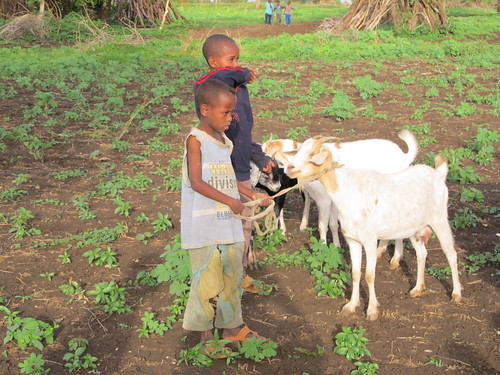
This post is part of the Science Tuesday feature series on the USDA blog. Check back each week as we showcase stories and news from USDA’s rich science and research portfolio.
USDA scientist Tad Sonstegard’s comparison of the World Food Programme’s “Hunger Map” to the Food and Agriculture Organization’s goat census statistics, reveals that 90 percent of all goats in the world are located in main ‘hunger zones’ of Sub-Saharan Africa and South Asia. What’s the connection? Goats are a common animal of the poorest people, and they are an important part of the solution to global food security. They are fairly low maintenance and easy to raise and farm.
Big data isn’t just massive amounts of numbers and codes for scientists and researchers. That information, when interpreted and applied, can be used to help people understand—and maybe change—the world around them. Tad is a geneticist with USDA’s Agricultural Research Service and is part of an international team that is gathering genetic data on goats. The team is using this information to ultimately improve goat production for U.S. and international farmers to help feed families across the globe.
For ARS, the project started as part of the U.S. government’s Feed the Future initiative, aimed at improving agricultural productivity, increasing global food security and generating economic returns for small farm holders. It has since grown into something much larger. The science and farming community worldwide have banned together to contribute data on more than 4,000 goats—it’s still growing. ARS will be one of the largest data contributors to this global initiative called ADAPTmap.
Tad and his team are developing and using genomic tools to more efficiently sort large data chunks, which can be used to identify specific traits needed to meet consumer demands or too sustain breeding programs for genetic improvement in developing nations. The International Goat Genome Consortium worked with Illumina, Inc., a San Diego firm, to design a chip for genomics-based studies. The beadchip, Caprine53K, provides DNA information that allows the international team to compare data across studies. Combining data allows for more powerful detection and analysis of traits important for sustaining indigenous goats.
Eventually, this information can be incorporated into on-farm breeding programs to help farmers select goats that have specific traits like heat stress tolerance or disease resistance; or that improve selection for favorable traits—like increased milk production or improved meat quality.
For small farmers, increased milk production from indigenous goats can change their future. It can make a difference by providing increased access to foods needed to improve their children’s nutrition, or by adding extra income needed to support school fees. This project and others like it are being discussed at this week’s G-8 International Conference on Open Data for Agriculture.
